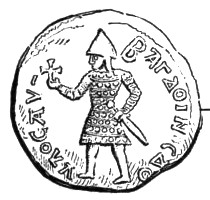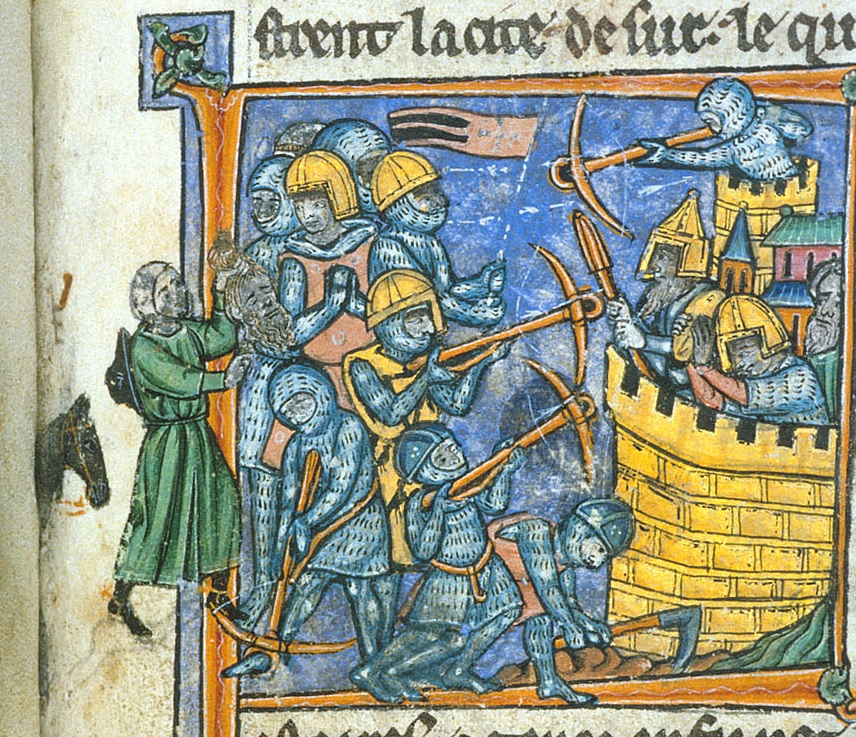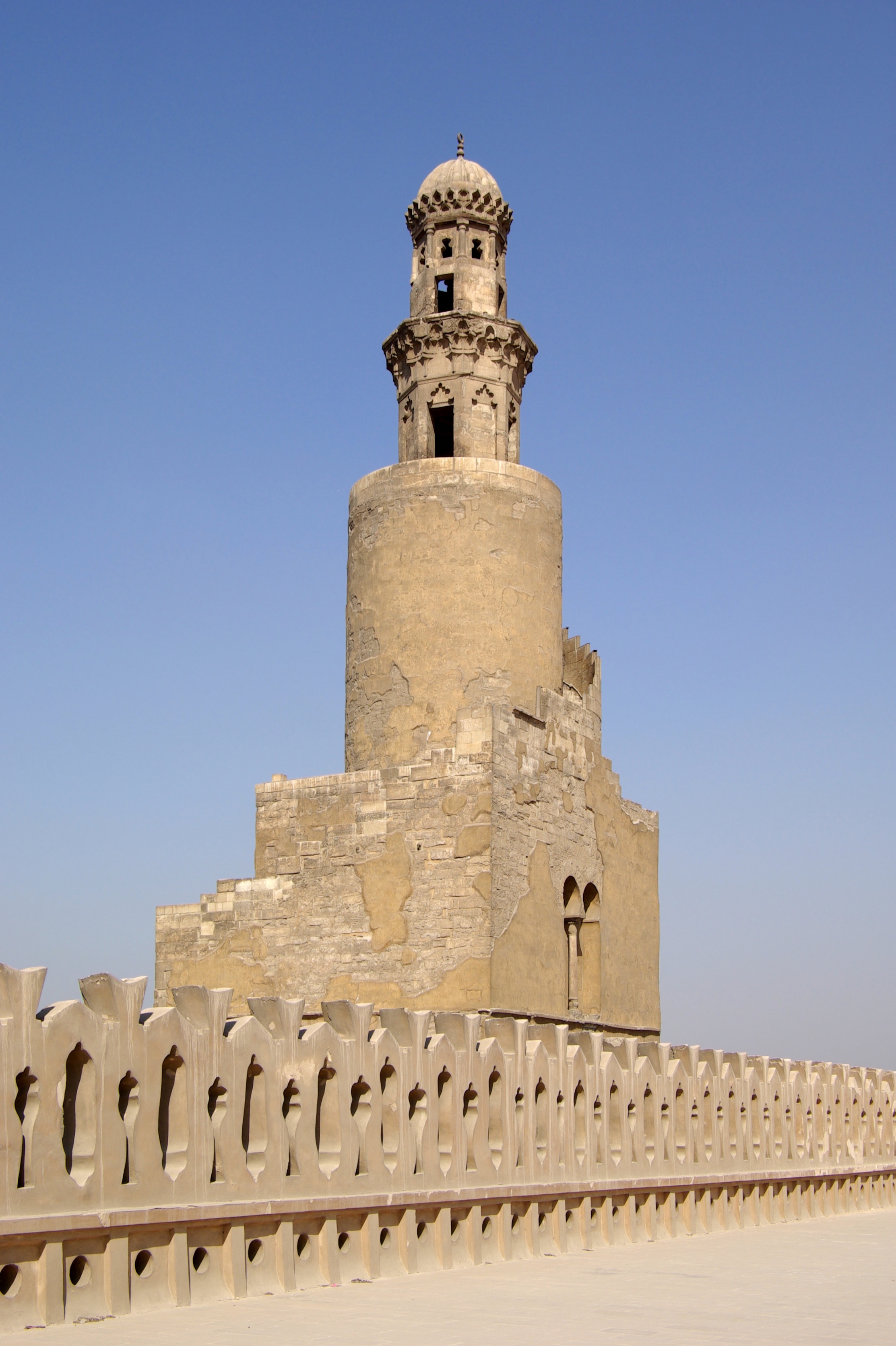|
1123
Year 1123 ( MCXXIII) was a common year starting on Monday (link will display the full calendar) of the Julian calendar. Events By place Levant * April 18 – King Baldwin II of Jerusalem is captured by Turkish forces under Belek Ghazi – while preparing to practice falconry near Gargar on the Euphrates. Most of the Crusader army is massacred, and Baldwin is taken to the castle at Kharput. To save the situation the Venetians are asked to help. Doge Domenico Michiel lifts the siege of Corfu (see 1122) and takes his fleet to Acre, arriving at the port in the end of May. * May – Baldwin II and Joscelin I are rescued by 50 Armenian soldiers (disguised as monks and merchants) at Kharput. They kill the guards, and infiltrate the castle where the prisoners are kept. Joscelin escapes to seek help. However, the castle is soon besieged by Turkish forces under Belek Ghazi – and is after some time recaptured. Baldwin and Waleran of Le Puiset are moved for great ... [...More Info...] [...Related Items...] OR: [Wikipedia] [Google] [Baidu] |
Eustace Grenier
Eustace I Granier, also known as Eustace Grenier or Eustace Garnier, called in Latin ''Eustachius Granarius'' in the charters (born around 1070 and died on 15 June 1123), was a Flemish crusader who took part in the First Crusade. He became lord of Caesarea in 1101 and lord of Sidon in 1110. On 18 April 1123, he was elected constable and bailiff of Jerusalem during the captivity of Baldwin II of Jerusalem. Shortly before his death, he defeated a Fatimid army at the Battle of Yibneh near Ibelin. Eustace Grenier is quoted in a text in verse written during his life in honour of the knights of the diocese of Thérouanne who accompanied Baldwin of Boulogne to the Holy Land. Contemporary authors and historians identify Eustace Grenier as a nobleman from the diocese of Thérouanne in the County of Saint-Pol. Alan V. Murray, historian of the Crusades, writes: "However, his origins can be established with a high degree of certainty. The ''Versus de viris illustribus diocesis Tarvanensi ... [...More Info...] [...Related Items...] OR: [Wikipedia] [Google] [Baidu] |
Pactum Warmundi
The Pactum Warmundi was a treaty of alliance established in 1123 between the Crusader Kingdom of Jerusalem and the Republic of Venice. Background In 1123, King Baldwin II was taken prisoner by the Artuqids, and the Kingdom of Jerusalem was subsequently invaded by the Fatimids of Egypt. The Doge of Venice, Domenico Michele, set sail with a large fleet, which defeated the Egyptian fleet off the coast of Syria and captured many ships. The Venetians then landed at Acre; the Doge completed a pilgrimage to Jerusalem, where he celebrated Christmas, and met with Warmund, Patriarch of Jerusalem, and the Constable William Buris, governing Jerusalem in place of Baldwin II. It was agreed that the Venetian fleet would help the crusaders attack either Tyre or Ascalon, the only two cities on the coast still under Muslim control; the barons from the south of the Kingdom wanted to attack Ascalon, while those in the north preferred to direct the fleet against Tyre, which was larger and we ... [...More Info...] [...Related Items...] OR: [Wikipedia] [Google] [Baidu] |
Battle Of Yibneh
In the Battle of Yibneh (Yibna) in 1123, a Crusader force led by Eustace Grenier crushed a Fatimid army from Egypt sent by Vizier Al-Ma'mun between Ascalon and Jaffa Jaffa, in Hebrew Yafo ( he, יָפוֹ, ) and in Arabic Yafa ( ar, يَافَا) and also called Japho or Joppa, the southern and oldest part of Tel Aviv-Yafo, is an ancient port city in Israel. Jaffa is known for its association with the b .... Background After the First Crusade captured Jerusalem from the Fatimids, vizier al-Afdal Shahanshah mounted a series of invasions "almost annually" from 1099 to 1107 against the newly established Kingdom of Jerusalem. Egyptian armies fought three major battles at Ramla in 1101, 1102 and 1105, but they were ultimately unsuccessful. After this, the vizier contented himself to launching frequent raids on Frankish territory from his coastal fortress of Ascalon. In 1121, al-Afdal was assassinated. Meanwhile, Jerusalem was weakened by the capture of King Baldwin II ... [...More Info...] [...Related Items...] OR: [Wikipedia] [Google] [Baidu] |
Baldwin II Of Jerusalem
Baldwin II, also known as Baldwin of Bourcq or Bourg (; – 21August 1131), was Count of Edessa from 1100 to 1118, and King of Jerusalem from 1118 until his death. He accompanied his cousins Godfrey of Bouillon and Baldwin of Boulogne to the Holy Land during the First Crusade. He succeeded Baldwin of Boulogne as the second count of Edessa when he left the county for Jerusalem following his brother's death. He was captured at the Battle of Harran in 1104. He was held first by Sökmen of Mardin, then by Jikirmish of Mosul, and finally by Jawali Saqawa. During his captivity, Tancred, the Crusader ruler of the Principality of Antioch, and Tancred's cousin, Richard of Salerno, governed Edessa as Baldwin's regents. Baldwin was ransomed by his cousin, Joscelin of Courtenay, lord of Turbessel, in the summer of 1108. Tancred attempted to retain Edessa, but Bernard of Valence, the Latin patriarch of Antioch, persuaded him to restore the county to Baldwin. Baldwin allied with Jawa ... [...More Info...] [...Related Items...] OR: [Wikipedia] [Google] [Baidu] |
Harran
Harran (), historically known as Carrhae ( el, Kάρραι, Kárrhai), is a rural town and district of the Şanlıurfa Province in southeastern Turkey, approximately 40 kilometres (25 miles) southeast of Urfa and 20 kilometers from the border crossing with Syria at Akçakale. Harran was founded at some point between the 25th and 20th centuries BC as a merchant colony by Sumer, Sumerian traders from Ur. Over the course of its early history, Harran rapidly grew into a major Mesopotamia, Mesopotamian cultural, commercial and religious center. It was made a religiously and politically influential city through its association with the moon-god Sin (mythology), Sin; many prominent Mesopotamian rulers consulted with and renovated the moon-temple of Ekhulkhul in Harran. Harran came under Assyria, Assyrian rule under Adad-nirari I ( BC) and became a provincial capital often second in importance only to the Assyrian capital of Assur itself. During the collapse of the Assyrian Empire, Harra ... [...More Info...] [...Related Items...] OR: [Wikipedia] [Google] [Baidu] |
Waleran Of Le Puiset
Waleran (Galéran) of Le Puiset (d. in prison 1126), son of Hugh I of Le Puiset and Alice de Montlhéry (daughter of Guy I of Montlhéry). Seigneur of Birejik. He is quoted in a donation made ''circa'' 1102 by his brother Hugh to the abbey of Saint-Martin-des-Champs. He went to fight in the Holy Land at the service of Baldwin of Bourg, Count of Edessa, in the army of Bohemond of Taranto. From 1115, he decided to eliminate the Armenian nobility of the county after several Armenian plots to deliver Edessa to the Turks. After having subjected and exiled Kogh Vasil, Baldwin attacked Abu'lgharib Artsuni, Lord of Birejik. A compromise is reached, whereby Abu'lgharib delivered the city and exiled himself into Cilician Armenia. Baldwin then gave the fief of Birejik and the hand of the daughter of Abu'lgharib to Waleran. King Baldwin I of Jerusalem died in 1118, and Baldwin II, Count of Edessa, succeeded him, with the help of Joscelin I of Courtenay Joscelin of Courtenay (or Jo ... [...More Info...] [...Related Items...] OR: [Wikipedia] [Google] [Baidu] |
May 30
Events Pre-1600 * 70 – Siege of Jerusalem: Titus and his Roman legions breach the Second Wall of Jerusalem. Jewish defenders retreat to the First Wall. The Romans build a circumvallation, cutting down all trees within fifteen kilometres. *1381 – Beginning of the Peasants' Revolt in England. *1416 – The Council of Constance, called by Emperor Sigismund, a supporter of Antipope John XXIII, burns Jerome of Prague following a trial for heresy. * 1431 – Hundred Years' War: In Rouen, France, the 19-year-old Joan of Arc is burned at the stake by an English-dominated tribunal. * 1434 – Hussite Wars: Battle of Lipany: Effectively ending the war, Utraquist forces led by Diviš Bořek of Miletínek defeat and almost annihilate Taborite forces led by Prokop the Great. * 1510 – During the reign of the Zhengde Emperor, Ming dynasty rebel leader Zhu Zhifan is defeated by commander Qiu Yue, ending the Prince of Anhua rebellion. * 1536 – King H ... [...More Info...] [...Related Items...] OR: [Wikipedia] [Google] [Baidu] |
Acre, Israel
Acre ( ), known locally as Akko ( he, עַכּוֹ, ''ʻAkō'') or Akka ( ar, عكّا, ''ʻAkkā''), is a city in the coastal plain region of the Northern District of Israel. The city occupies an important location, sitting in a natural harbour at the extremity of Haifa Bay on the coast of the Mediterranean's Levantine Sea."Old City of Acre." , World Heritage Center. World Heritage Convention. Web. 15 Apr 2013 Aside from coastal trading, it was also an important waypoint on the region's coastal road and the road cutting inland along the Jezr ... [...More Info...] [...Related Items...] OR: [Wikipedia] [Google] [Baidu] |
Republic Of Venice
The Republic of Venice ( vec, Repùblega de Venèsia) or Venetian Republic ( vec, Repùblega Vèneta, links=no), traditionally known as La Serenissima ( en, Most Serene Republic of Venice, italics=yes; vec, Serenìsima Repùblega de Venèsia, links=no), was a sovereign state and maritime republic in parts of present-day Italy (mainly northeastern Italy) that existed for 1100 years from AD 697 until AD 1797. Centered on the lagoon communities of the prosperous city of Venice, it incorporated numerous overseas possessions in modern Croatia, Slovenia, Montenegro, Greece, Albania and Cyprus. The republic grew into a trading power during the Middle Ages and strengthened this position during the Renaissance. Citizens spoke the still-surviving Venetian language, although publishing in (Florentine) Italian became the norm during the Renaissance. In its early years, it prospered on the salt trade. In subsequent centuries, the city state established a thalassocracy. It dominat ... [...More Info...] [...Related Items...] OR: [Wikipedia] [Google] [Baidu] |
Joscelin I, Count Of Edessa
Joscelin of Courtenay (or Joscelin I) (died 1131), Prince of Galilee and Lord of Turbessel (1115–1131) and Count of Edessa (1119–1131), ruled over the County of Edessa during its zenith, from 1118 to 1131. Captured twice, Joscelin continued to expand his county, even participating in the Battle of Azaz in 1125. Gravely injured during the collapse of a sapper mine, Joscelin marched his army to relieve the besieged fortress of Kaysun, and died soon after. Biography Joscelin was the son of Joscelin I, Lord of Courtenay, and Elizabeth, daughter of Guy I of Montlhéry. He arrived in the Holy Land during the Crusade of 1101, and entered first into the service of his cousin Count Baldwin II of Rethel (in the army of Godfrey of Bouillon), who invested him with the lordship of Turbessel. Later Joscelin would serve in the army of Stephen of Blois. In 1104, he was captured at the Battle of Harran. After passing into the hands of Ilghazi, ruler of Mardin, Joscelin was ransomed ... [...More Info...] [...Related Items...] OR: [Wikipedia] [Google] [Baidu] |
Belek Ghazi
Belek Ghazi (''Nuruddevle Belek'' or ''Balak'') was a Turkish bey in the early 12th century. Early life His father was Behram and his grandfather was Artuk Bey, an important figure of the Seljuk Empire in the 11th century. He was a short-term governor of Suruç (now a district center in Şanlıurfa Province of Turkey). The city was captured during the First Crusade in 1098. He took part in the Seljuk expedition to Antakya which was recently lost to Crusaders. But the campaign ended in failure. Beylik in Harput In 1112, Belek captured Harput (an ancient city near to present day Elazığ in Turkey) from Mengüceks. He founded a beylik. This beylik is now known as the Harput branch of the Artukids (the other two being the Hasankeyf branch of Sökmen and Mardin branch of Ilghazi). Next year he married Ayşe Hatun, widow of Anatolian Seljuk sultan Kilij Arslan. By this prestigious marriage, he formed family ties with the Seljuk family.Belek Gazi In 1120, Belek togethe ... [...More Info...] [...Related Items...] OR: [Wikipedia] [Google] [Baidu] |
Egypt In The Middle Ages
Following the Islamic conquest in 639, Lower Egypt was ruled at first by governors acting in the name of the Rashidun Caliphs and then the Umayyad Caliphs in Damascus, but in 747 the Umayyads were overthrown. Throughout Islamic rule, Askar was named the capital and housed the ruling administration. The conquest led to two separate provinces all under one ruler: Upper and Lower Egypt. These two very distinct regions were governed by the military and followed the demands handed down by the governor of Egypt and imposed by the heads of their communities. Egypt was ruled by many dynasties from the start of Islamic control in 639 until the early 16th century. The Umayyad period lasted from 658 to 750. The Abbasid period which came after was much more focused on taxes and centralizing power. In 868, the Tulunids, ruled by Ahmad ibn Tulun, expanded Egypt's territory into the Levant. He would rule until his death in 884. After years of turmoil under Ahmad ibn Tulun's successor, many c ... [...More Info...] [...Related Items...] OR: [Wikipedia] [Google] [Baidu] |





